
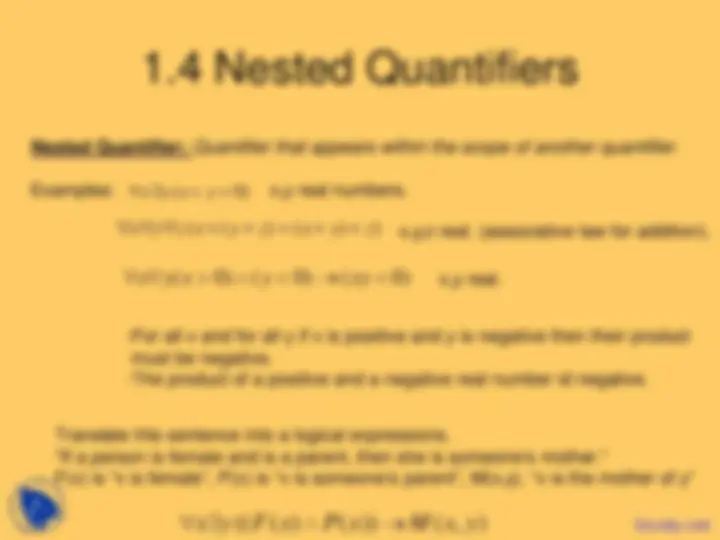
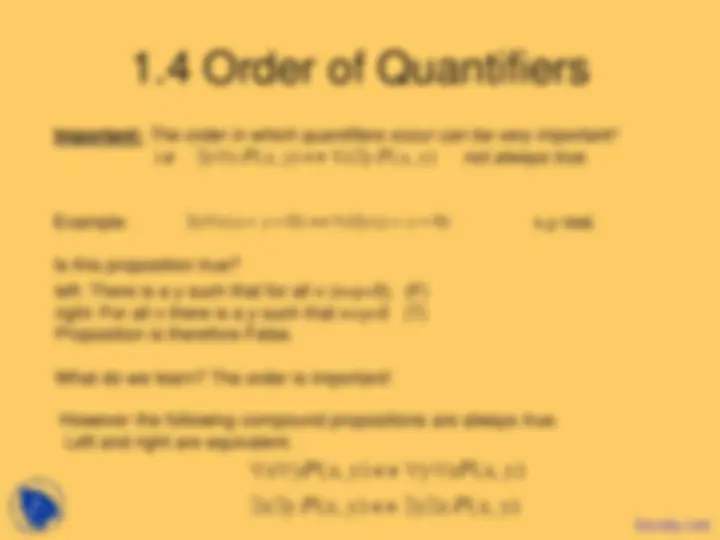
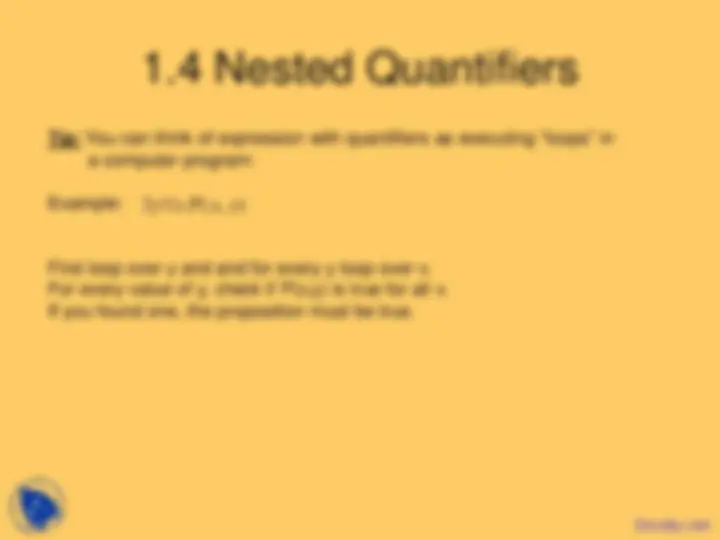
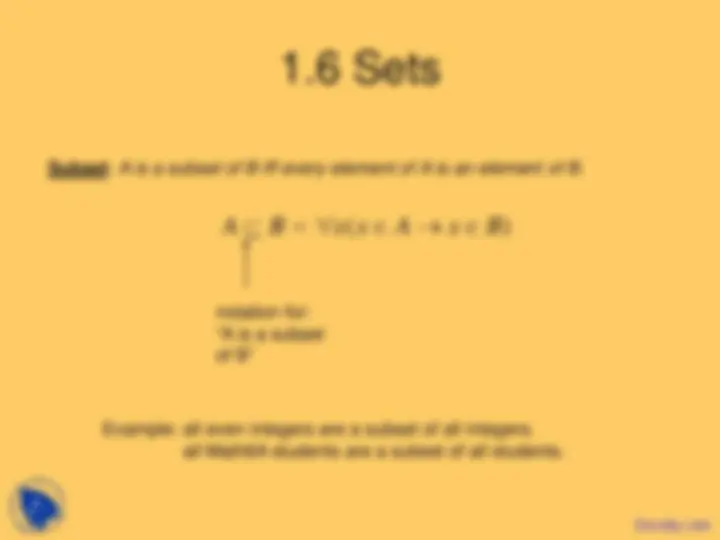
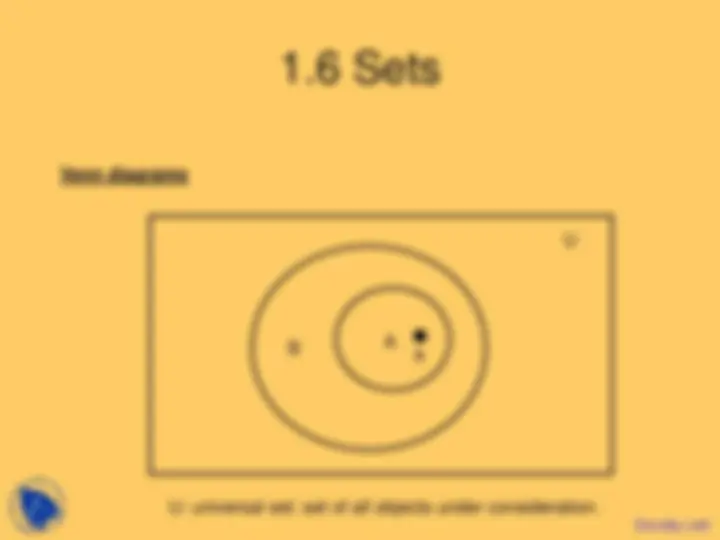
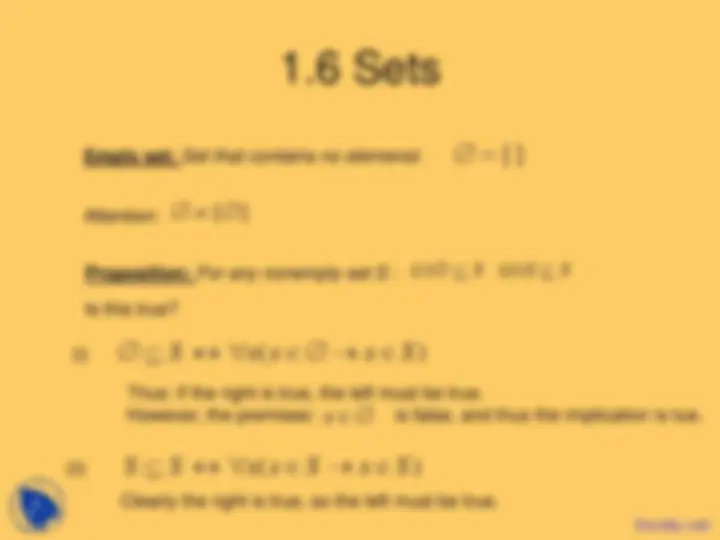
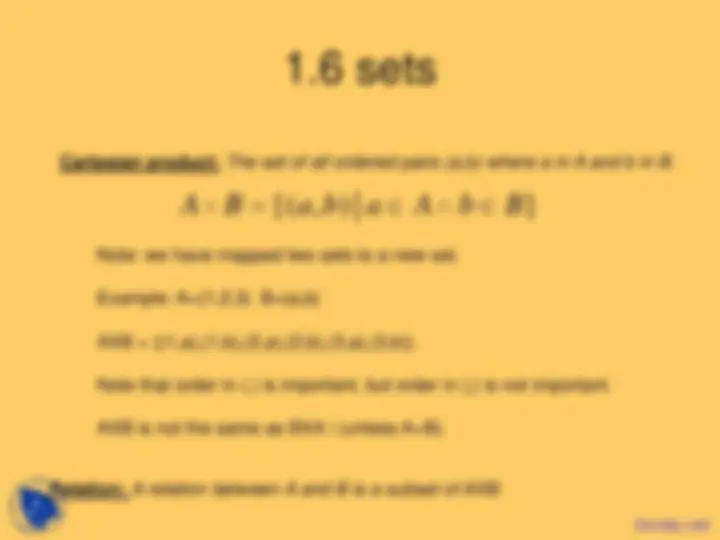


Study with the several resources on Docsity

Earn points by helping other students or get them with a premium plan


Prepare for your exams
Study with the several resources on Docsity

Earn points to download
Earn points by helping other students or get them with a premium plan
Community
Ask the community for help and clear up your study doubts
Discover the best universities in your country according to Docsity users
Free resources
Download our free guides on studying techniques, anxiety management strategies, and thesis advice from Docsity tutors
During the study of discrete mathematics, I found this course very informative and applicable.The main points in these lecture slides are:Nested Quantifiers, Logical Operators, Compound Proposition, Logical Equivalences, Associative Law for Addition, Logical Expressions, Product of Real Number, Order of Quantifiers, Fundamental Discrete Structure
Typology: Slides
1 / 13

This page cannot be seen from the preview
Don't miss anything!








with variables into propositions.
Important: The order in which quantifiers occur can be very important!
i.e not always true.
Example: x,y real.
Is this proposition true?
∃ y ∀ x ( x + y = 0 ) ↔∀ x ∃ y ( x + y = 0 )
left: There is a y such that for all x (x+y=0). (F)
right: For all x there is a y such that x+y=0 (T)
Proposition is therefore False.
What do we learn? The order is important!
∃ y ∀ xP ( x , y )↔∀ x ∃ yP ( x , y )
However the following compound propositions are always true.
Left and right are equivalent.
( , ) ( , )
( , ) ( , )
x yP x y y xP x y
x yP x y y xP x y
∃ ∃ ↔∃ ∃
∀ ∀ ↔∀ ∀
Tip: You can think of expression with quantifiers as executing “loops” in
a computer program:
Example:
First loop over y and and for every y loop over x.
For every value of y, check if P(x,y) is true for all x.
If you found one, the proposition must be true.
∃ y ∀ xP ( x , y )
Famous sets in math: N = {0,1,2,3,...}
Q = {p/q | p in Z, q in Z, q is not 0}
R = {x | x is a real number}.
{,...} is used to indicate the the rest of the sequence once it’s clear how to
proceed {1,2,3,...}
set builder notation : {x | conditions(x) }.
This could be read as “all x such that the conditions hold true”.
Definition: Two sets are equal iff they contain the same elements.
Example: {1 2 2 3 3 3 3 4 6 } = {1 2 3 4 6} = {6 4 1 3 2}
notation for “x is an
element of B”.
Subset : A is a subset of B iff every element of A is an element of B.
notation for:
“A is a subset
of B”
Example: all even integers are a subset of all integers.
all Math6A students are a subset of all students.
Proposition: For any nonempty set S :
Attention:
∅ ≠ ∅{ }
Is this true?
Thus: if the right is true, the left must be true.
However, the premises: is false, and thus the implication is tue.
x ∈∅
Clearly the right is true, so the left must be true.
Proper Subset: A is a proper subset of B iff A is a subset of B and A is not equal to B
Sets may contain other sets as members!
Example: {0, {a},{b}, {a,b}} = {x|x is a subset of {a,b}}
Note “a” is not “{a}”.
Cardinality: The cardinality of A is the number of distinct elements in A: |A|.
Also: S is finite in this case.
Infinite set: a set that is not finite. (e.g. all integers, real numbers).
countable uncountable
Docsity.com
Cartesian product: The set of all ordered pairs (a,b) where a in A and b in B.
Note: we have mapped two sets to a new set.
Example: A={1,2,3} B={a,b}
AXB = {(1,a),(1,b),(2,a),(2,b),(3,a),(3,b)}.
Note that order in (.) is important, but order in {.} is not important.
AXB is not the same as BXA! (unless A=B).
Relation: A relation between A and B is a subset of AXB.